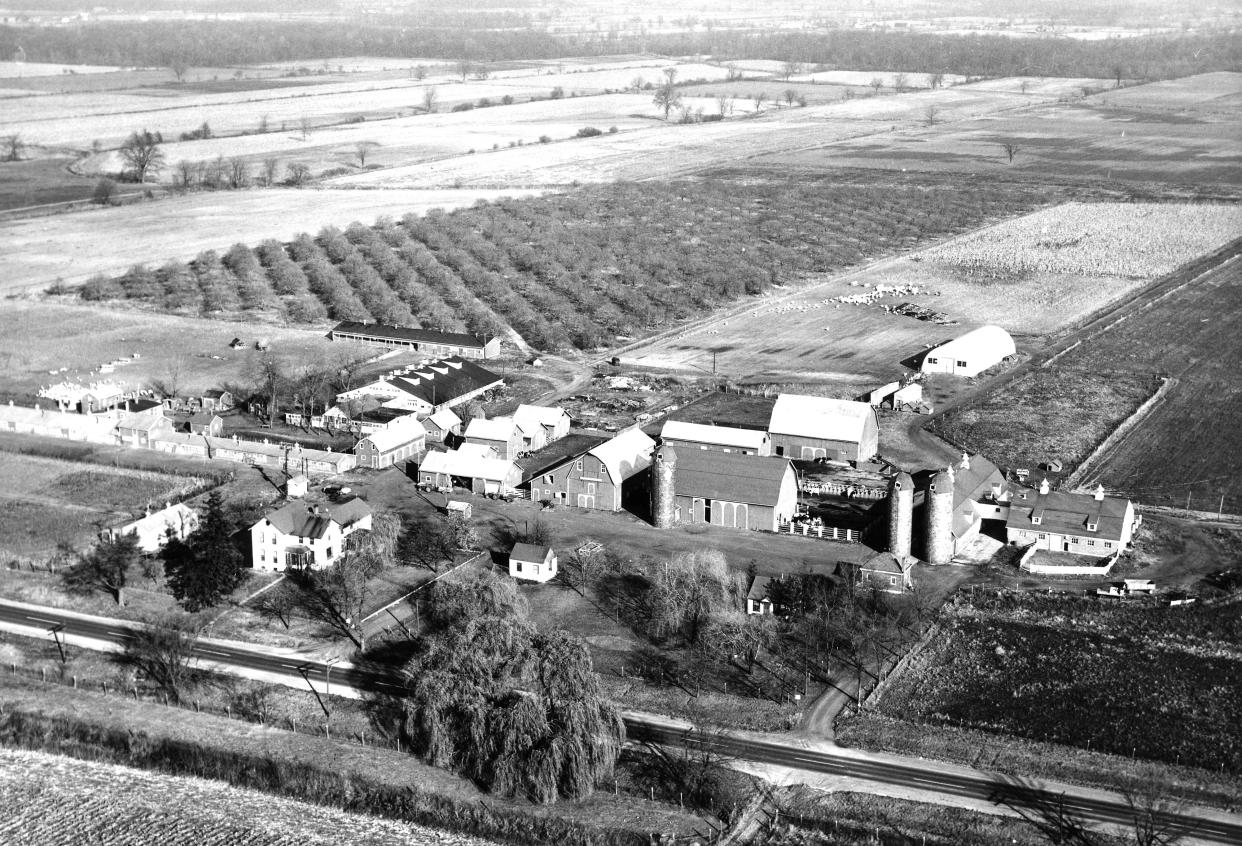Monroe County History: St. Mary Farms was economic heart of IHM Sisters

- Oops!Something went wrong.Please try again later.
A while back I wrote about St. Mary Farms – the farming operations that the Sisters, Servants of the Immaculate Heart of Mary (IHM) ran from the early 1900s to the mid-1970s.
As written in the 1948 book “No Greater Service: The History of the Congregation of the Sisters, Servants of the Immaculate Heart of Mary” by Sister M. Rosalita, the IHM Sisters began the farm to serve as the heart of the IHM Sisters’ domestic and educational economic operations. The rationale was that operating the farm would help the IHM Sisters to reduce their overhead/cost of living and continue to carry on their necessary and extensive building program – both in Monroe and elsewhere. It would also help underwrite educational costs of the sisters as they pursued Catholic education at various levels (including college).
Cattle operations were a primary focus – with an average beef herd of 50 head and a dairy herd of 140 head. Holsteins were the dominant breed (with 50% registered), and the operations were managed both on-site and in Ohio (where, as previously mentioned, Dr. Fred M. Douglass, a noted Toledo surgeon raised “fine-blooded stock on his Ohio farm”). With output of 240 gallons of milk (pasteurized before distribution), the milking unit was productive – performing operations in a modern tile dairy barn facility equipped with a pen barn, milk house, and large, radial-tile silos for on-site storage prior to distribution.

Similarly, the pork unit consisting of a large, spherical tile and steel farrowing pen featured Hampshire and Yorkshire swine. Nearby, the pork slaughterhouse and smokehouse operations staff killed, butchered and smoked the meat. Some beef was processed here as well.
In the poultry area, the operations of chicken and turkey houses were comprehensive – feeding, raising, killing and processing over 7,000 chickens and 1,000 turkeys annually for distribution/consumption.
St. Mary Farms operations included a building inventory of nearly 50 buildings – the largest being a quonset facility measuring 40 feet x 100 feet where most of the farm equipment was stored. Members of the farm corps – both single and married workers – shared on-site housing, including five large dwellings (two frame and three metal tile) each equipped with furnaces, bathrooms and garages. Job assignments included supervision of farmhands, animal care, crop management, harvest/slaughter duties and equipment maintenance/operation. Nuns split their time working both the field areas and the vast gardens that were planted near the IHM Motherhouse property but left heavy jobs for men to perform. Following harvest, the canning and preservation of produce/fruit crops were large-scale operations performed primarily by the IHM Sisters.

Each year, the IHM Sisters celebrate the Major Litanies (also known in Catholic doctrine as the Major Rogation) and feast of St. Mark the Evangelist (one of the key New Testament scholars) on April 25. April 25 is also known as St. Mark’s Procession or the Greater Litanies. When “No Greater Service” was written – again, in 1948 – Sister M. Rosalita tells in her narrative of the busload of sisters going to St. Mary’s Farm and Monsignor Walter Marron (who was a Monroe native and became chaplain of St. Mary’s in 1921) chanting the ancient prayer, “Crown the year with Thy blessing and with Thy benefits; and let Thy fields be filled with fertility.” Marron would then proclaim, “…The fruits of the earth which Thou does deign to nourish by means of temperate breezes and rain may be penetrated with the dew of thy blessings.”
In later years, St. Mary Farms operations would become more automated and emphasis on the farm as being a primary economic engine for the IHM Sisters would decrease.
Tom Adamich is president of Visiting Librarian Service, a firm he has operated since 1993. He also is project archivist for the Greening Nursery Co. and Family Archives and the electric vehicle awareness coordinator at Monroe County Community College.
This article originally appeared on The Monroe News: Monroe County History: St. Mary Farms economic heart of IHM Sisters

